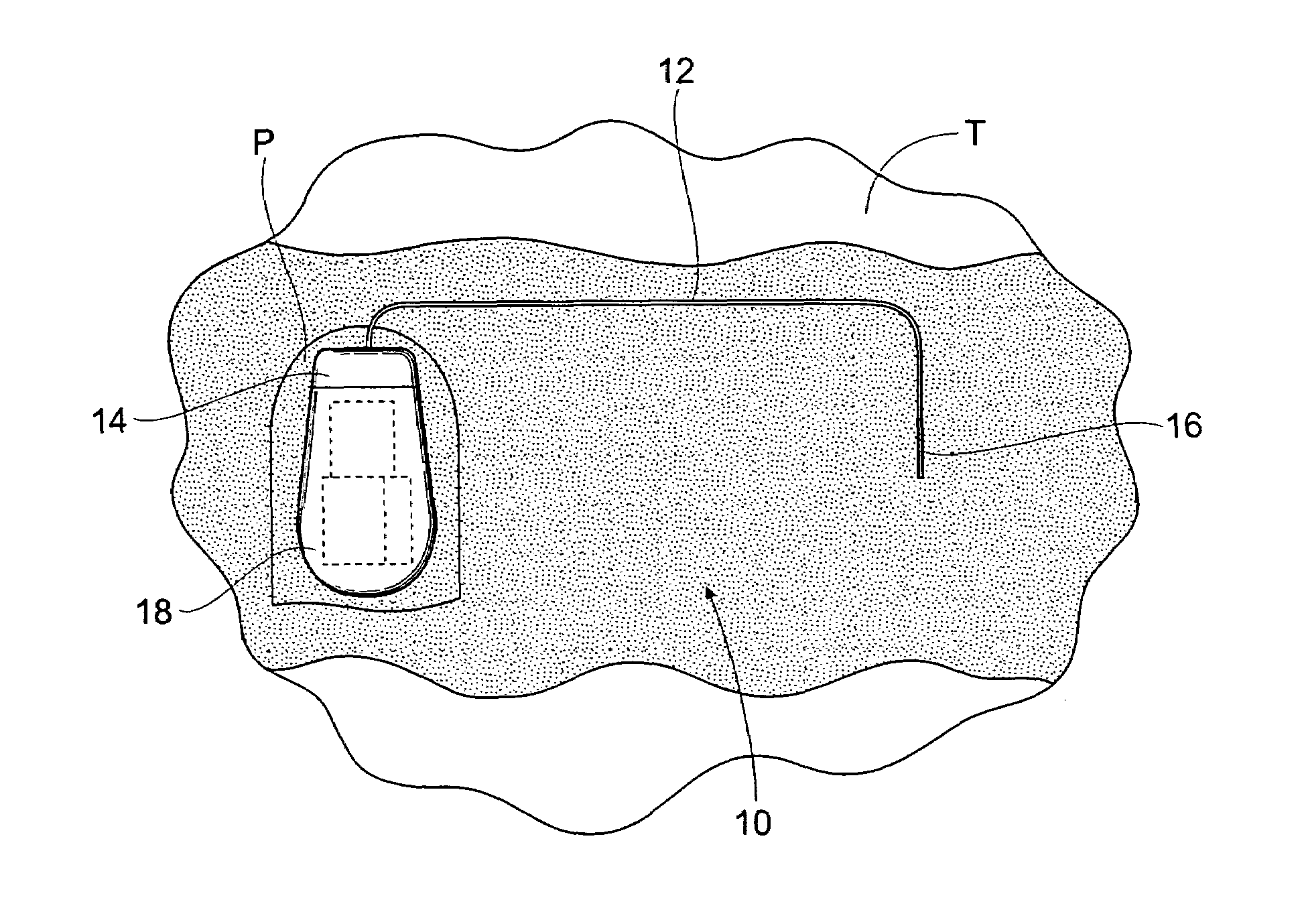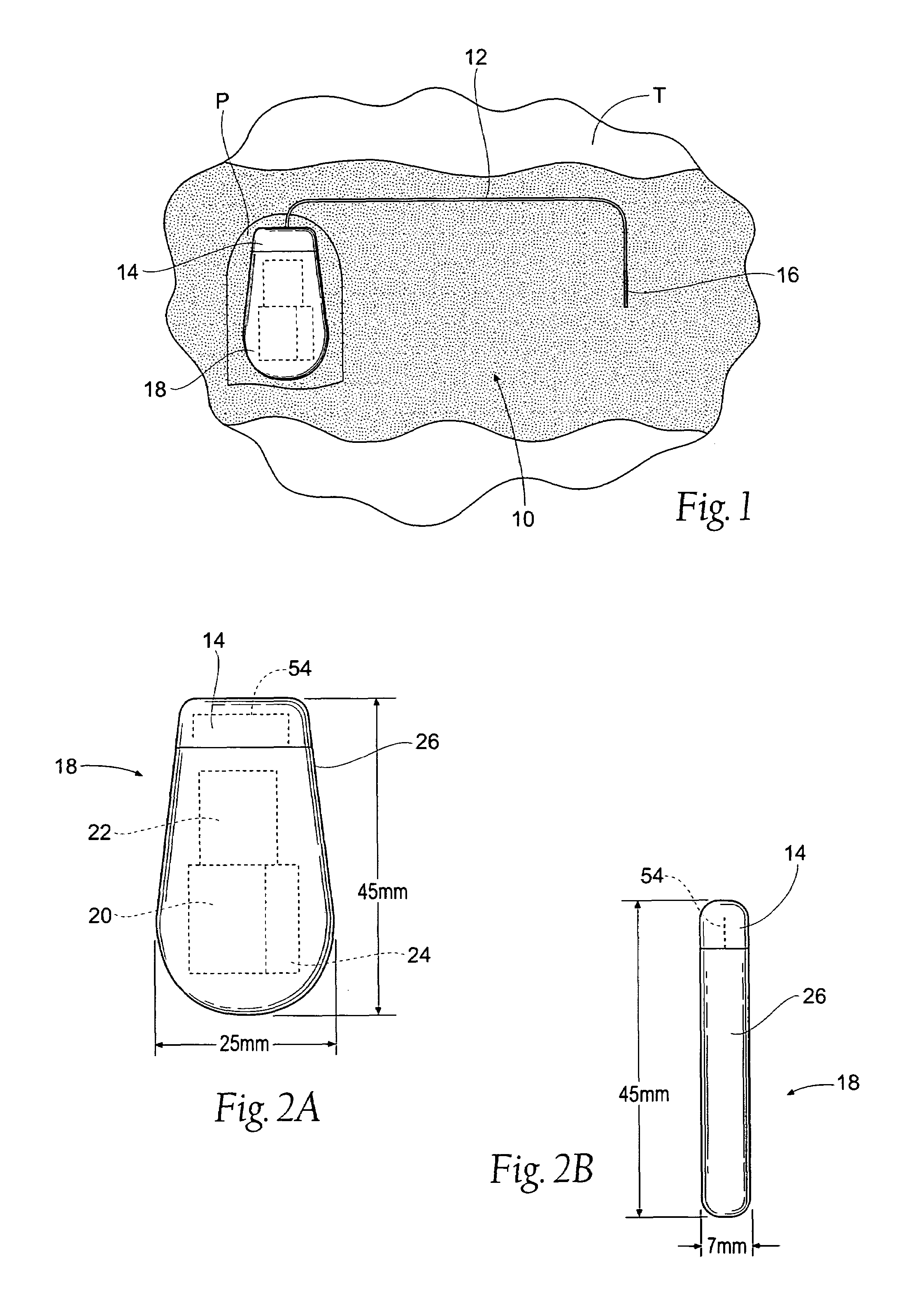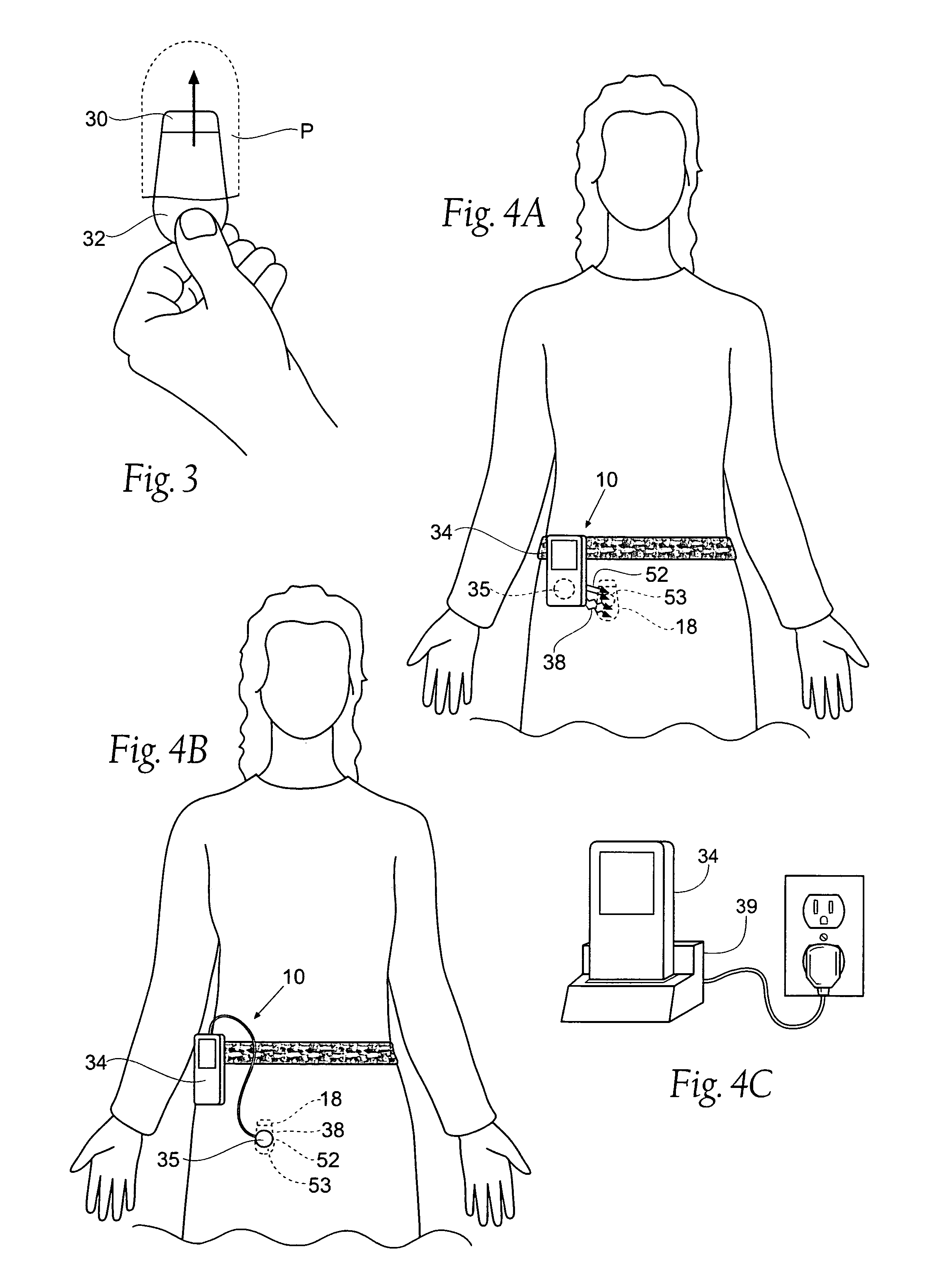[0012]Another aspect of the invention provides improved assemblies, systems, and methods for providing a universal device which can be used for many specific clinical indications requiring the application of pulse trains to muscle and / or nervous tissue for therapeutic (treatment) or functional restoration purposes. Most of the components of the implantable pulse generator are desirably sized and configured so that they can accommodate several different indications, with no or only minor change or modification. Technical features of the implantable pulse generator device include a secondary power source and / or primary power source for improved service life, wireless telemetry for programming and interrogation, a single or limited number of stimulus output stage(s) for pulse generation that are directed to one or more output channels, a lead connection header to provide reliable and easy connection and replacement of the lead / electrode, a programmable microcontroller for timing and control of the implantable pulse generator device functions, and power management circuitry for efficient recharging of the secondary power source and the distribution of appropriate voltages and currents to other circuitry, all of which are incorporated within a small composite case for improved quality of life and ease of implantation.
[0015]In one embodiment, an implantable pulse generator incorporates wireless telemetry. Wireless telemetry allows the implantable pulse generator to wirelessly interact with a clinician programmer, a clinician programmer derivative, a patient controller, and an implantable pulse generator charger, for example. The wireless telemetry allows a clinician to transmit stimulus parameters, regimes, and other setting to the implantable pulse generator before or after it has been implanted. The wireless telemetry also allows the clinician to retrieve information stored in the implantable pulse generator about the patient's usage of the implantable pulse generator and information about any modifications to the settings of the implantable pulse generator made by the patient. The wireless telemetry also allows the patient controller operated by the user to control the implantable pulse generator, both stimulus parameters and settings in the context of a therapeutic application, or the real-time stimulus commands in the case of a neural prosthetic application. In addition, the wireless telemetry allows the implantable pulse generator to communicate with the recharger (implantable pulse generator charger) during a battery recharge in order to adjust the recharging parameters if necessary, which provides for an efficient and effective recharge. In addition, the wireless telemetry allows the operating program of the implantable pulse generator, i.e., the embedded executable code which incorporates the algorithms and logic for the operation of the implantable pulse generator, to be installed or revised after the implantable pulse generator has been assembled, tested, sterilized, and perhaps implanted. This feature could be used to provide flexibility to the manufacturer in the factory and perhaps to a representative of the manufacturer in the clinical setting.
[0016]In one embodiment, an implantable pulse generator provides a clinician programmer incorporating technology based on industry-standard hand-held computing platforms. The clinician programmer allows the clinician or physician to set parameters in the implantable pulse generator (IPG) relating to the treatment of the approved indication. The clinician programmer uses the wireless telemetry feature of the implantable pulse generator to bi-directionally communicate to the implantable pulse generator. In addition, additional features are contemplated based on the ability of the clinician programmer to interact with industry standard software and networks to provide a level of care that improves the quality of life of the patient and would otherwise be unavailable. Such features, using subsets of the clinician programmer software, might include the ability of the clinician or physician to remotely monitor and adjust parameters using the Internet or other known or future developed networking schemes. A clinician programmer derivative (or perhaps a feature included in the implantable pulse generator charger) would connect to the patient's computer in their home through an industry standard network such as the Universal Serial Bus (USB), where in turn an applet downloaded from the clinician's server would contain the necessary code to establish a reliable transport level connection between the implantable pulse generator and the clinician's client software, using the clinician programmer derivative as a bridge. Such a connection may also be established through separately installed software. The clinician or physician could then view relevant diagnostic information, such as the health of the unit or its current efficacy, and then direct the patient to take the appropriate action. Such a feature would save the clinician, the patient and the health care system substantial time and money by reducing the number of office visits during the life of the implant.
[0017]Other features of the clinician programmer, based on an industry standard platform, might include the ability to connect to the clinician's computer system in his or her office. Such features may take advantage of the Conduit connection employed by Palm OS® based devices. Such a connection then would transfer relevant patient data to the host computer or server for electronic processing and archiving. With a feature as described here, the clinician programmer then becomes an integral link in an electronic chain that provides better patient service by reducing the amount of paperwork that the physician's office needs to process on each office visit. It also improves the reliability of the service since it reduces the chance of mis-entered or mis-placed information, such as the record of the parameter setting adjusted during the visit.
 Login to View More
Login to View More  Login to View More
Login to View More 


